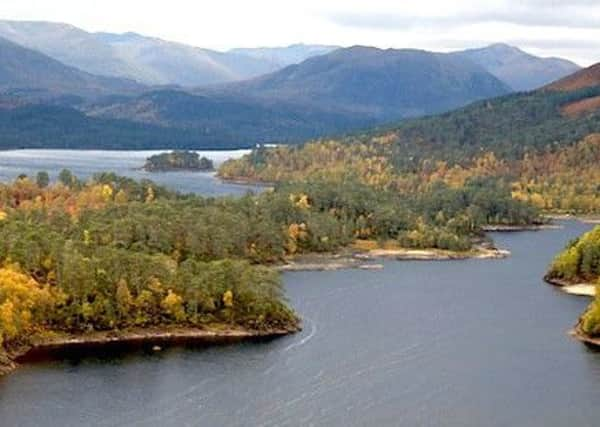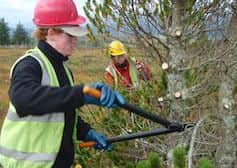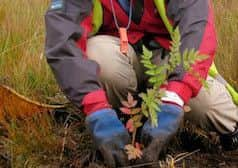What is left of the Old Caledonian Forest - and can it be saved?


Human activities have been the major cause of the reduction of the famous woodland to its present day figure of less than 5% of its original 1.5million hectares.
Environmental charity Trees for Life is now leading the cause for saving the forest.
Advertisement
Hide AdAdvertisement
Hide AdSpokesman Richard Bunting said: “Although the Caledonian Forest is a special place and is Scotland’s equivalent of a rainforest, it’s also one of the UK’s most endangered habitats.


“Once this ancient woodland covered much of the Highlands, with native pinewoods covering some 1.5 million hectares.”
But following a long history of deforestation, including timber production and over-grazing, the forest reached a critical point about 200 years ago, with too few remaining trees and too many deer eating seedlings – leaving geriatric woodlands of old trees.
Mr Bunting added: “Since then the forest has been slowly dying, and today only a tiny percentage of the former forest survives. This once mighty woodland has been reduced to 35 isolated remnants of native pinewoods.
“Sadly, the Caledonian Forest that we see today is much reduced in size.


“There has been a long history of deforestation in Scotland, and clearance of the land began in Neolithic times. Trees were cut for fuel and timber, and to convert the land to agriculture.
“Over the centuries, the forest shrank as the human population grew, and some parts were deliberately burned to eradicate ‘vermin’ such as the wolf. More recently, large areas were felled to satisfy the needs of industry, particularly after the timber supply in England had been exhausted.
“The widespread introduction of sheep and a large increase in the numbers of red deer ensured that once the forest was cleared, it did not return.”
Advertisement
Hide AdAdvertisement
Hide AdAs a result of this human-created imbalance in the ecosystem, the remnants have become ‘geriatric’ forests, composed of old trees reaching the end of their lifespans, with, until recently, very few new ones growing to take their place.


One of the key problems hampering natural regeneration of the forest is overgrazing by excessive numbers of red deer – the result of an ecological imbalance caused by humans, including the loss of natural predators and the dedication of large tracts of land since the 19th century for deer stalking and sheep grazing.
As the old trees die, the forest keeps shrinking.
Mr Bunting said: “There’s a very real danger that the surviving remnants will disappear within a few decades - which means we are the last generation with the opportunity to save the Caledonian Forest and restore it for the future.
“It’s also sadly the case that most large mammals native to the Highlands – including lynx, wild boar and European beaver – have disappeared along with their forest habitat.


“Although the forest still supports rare and unique species – including red squirrels, pine martens and wood ants – that are now scarce or absent in other parts of the UK, without concerted action to restore their forest home, their future is bleak.
“At Trees for Life, we are working to save the forest and its wildlife. Thanks to many volunteers from around the world, we have planted some 1.2 million trees at dozens of locations, and have helped the natural regeneration of several hundred thousand more.
“Every year teams of volunteers plant tends of thousands of young native trees and carry out other vital restoration work through our Conservation Weeks and Days.
“Our aim is to have planted or aided the natural regeneration of at least two million trees by 2018.
Advertisement
Hide AdAdvertisement
Hide Ad“People can also help us in lots of others ways - such as by becoming a member, by having a tree or a grove of trees planted for special occasions, or by sponsoring an acre of native forest.”
He added: “All of this activity is making a real difference, breathing new life to the wild landscapes of the Highlands.


“The good news is that life is renewing itself amongst the emerging woodlands - slowly but surely bringing the Caledonian Forest back from the brink of being forever, and offering a lifeline to wildlife including red squirrels, pine martins, rare sawflies, ospreys, wood ants and black grouse.”
Trees for Life is one of Scotland’s leading conservation volunteering charity with its main mission being to restore the ancient Caledonian Forest to the Scottish Highlands.
They are working with a number of partners including Forestry Commission Scotland, The National Trust for Scotland, RSPB and private landowners, to grow the Caledonian Forest of the future through planting native trees, removing non-native species and fencing seedlings to protect them from overgrazing.
In 2008 Trees for Life purchased Dundreggan Estate, an area of 10,000 acres of wild land near Loch Ness to establish a major forest restoration programme.
Mr Bunting said: “Our work is about people as much as places. The majority of our forest restoration activities are carried out by volunteers, with hundreds of people joining us from all over the world every year.”
The forest takes its name from the Romans, who called Scotland ‘Caledonia’, meaning ‘wooded heights’.
Advertisement
Hide AdAdvertisement
Hide AdThe native pinewoods, which formed the westernmost outpost of the boreal forest in Europe, are estimated to have once covered 1.5 million hectares as a vast primeval wilderness of Scots pine, birch, rowan, aspen, juniper and other trees.
On the west coast, oak and birch trees predominated in a temperate rainforest ecosystem rich in ferns, mosses and lichens.
Many species of wildlife flourished in the forest, including the European beaver, wild boar, lynx, moose, brown bear and wolf, as well as several notable species of birds - the capercaillie, crested tit and the endemic Scottish crossbill, which occurs nowhere else in the world apart from the pinewoods.
Losing top predators has had knock-on effects that have impoverished our countryside.
There is growing support for the reintroduction of our missing predators, with potential benefits for other wildlife and tourism, as well as an ethical case for repairing the damage.
The charity is currently publishing a series of articles in our members’ magazine, Caledonia Wild!, about restoring missing species.
These discuss the challenges of reintroducing species that haven’t been present for many years, sometimes centuries, and give details of conservation techniques to increase populations of rare species and to restore those that have been lost.
